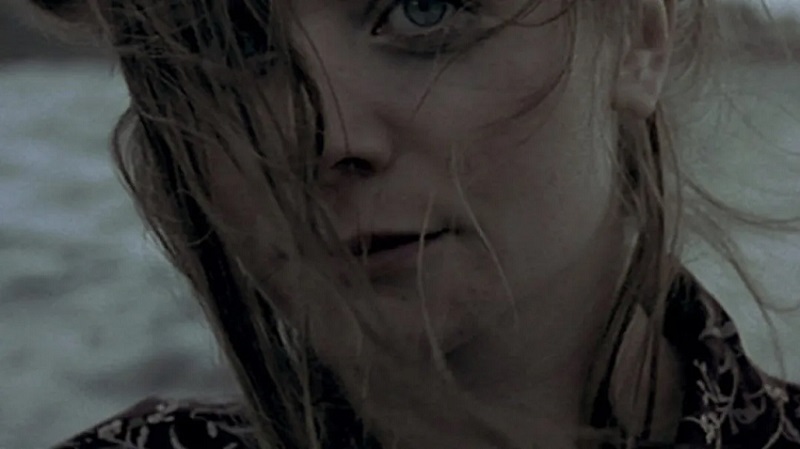
Set in the early 1970s on the north coast of Scotland, Breaking the Waves nevertheless feels strangely timeless. With its bleak backdrop and its puritanical locals—who attend fire-and-brimstone sermons, of course—it recalls the stark environs of Carl Dreyer’s films.
When Bess, a woman of what seems to be childlike enthusiasm, marries an oil worker named Jan, we can see that she loves him intensely. We feel for her when he’s offshore for long periods of time. Her ferocious love inspires the concern in the neighborhood, especially from Jan’s sister Dodo. When an accident sends Jan to the hospital, his bizarre, cruel requests to Bess show that his mental state has been compromised.
But what does true love require? Should Bess prostitute and disgrace herself for his pleasure? Is Bess a saint or a fool for fulfilling her husband’s deranged requests? And what of the God to whom she so passionately prays? Is he a sadist?
Breaking the Waves is, for some, a heartbreaking portrait of selflessness. For others, it is a troubling portrait of a woman suffering from some kind of psychosis. Many call it a masterpiece. Others find it contrived and sadistic. Where the spiritual dilemmas at the heart of films by Dreyer and Bergman invite contemplation, Von Trier’s work is more likely to provoke visceral, emotional responses that make intellectual consideration more difficult.
The story is told in chapters, each preceded by a chapter title set against a stunning, panoramic, “God’s-eye” view. By opening in a festive mode at a wedding, and then bringing us in close during an explicit scene of playful honeymoon consummation, Von Trier sets us up to suffer through Bess’s harrowing physical and psychological ordeal. The film’s greatest strength is Emily Watson’s tour de force performance, which made her an international star.
Discussed outside of the larger body of Von Trier’s work, viewers are more likely to find Breaking the Waves to be a compelling, unique act of spiritual questioning. But when taken into consideration alongside the films that followed—Dancer in the Dark, Dogville, Manderlay, and Antichrist, all of which portray women in situations of physical and psychological abuse and exploitation—other questions become more prominent. Why is Von Trier so interested in these stories? Are these meant to be passion plays, breaking down our defenses and moving us to compassion and moral outrage? Or are they acts of perverse manipulation and emotional abuse? — Jeffrey Overstreet
Arts & Faith Lists:
2004 Top 100 — Unranked List
2005 Top 100 — #50
2006 Top 100 — #59
2010 Top 100 — #99